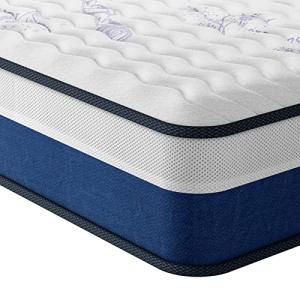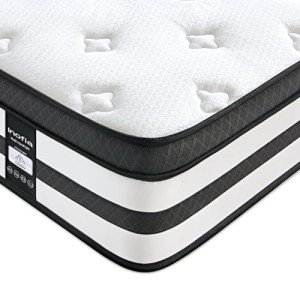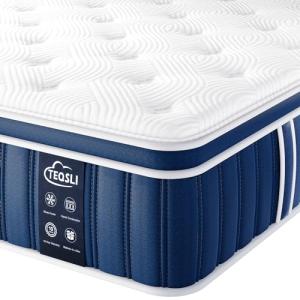In recent years, memory foam mattresses have gained immense popularity, especially among individuals seeking relief from back pain. The comfort and support provided by these mattresses are often advocated by healthcare professionals, making them an appealing choice for many. This guide examines the benefits of using a king size memory foam mattress for alleviating back pain, the features that contribute to their effectiveness, and addresses common questions regarding their use.
Understanding Back Pain
Before delving into the specifics of king size memory foam mattresses, it’s important to understand back pain. Back pain is a common ailment that affects a significant percentage of the population. Factors contributing to back pain can include:
- Poor posture
- Sedentary lifestyle
- Injuries or trauma
- Degenerative conditions
- Improper sleep surfaces
As individuals search for solutions to alleviate discomfort, selecting the right mattress becomes a vital factor in mitigating back pain.
The Benefits of Memory Foam Mattresses
Memory foam technology was developed by NASA in the 1960s to enhance comfort and safety in spacecrafts. Today, it has transformed the sleep industry, providing numerous benefits, particularly for those suffering from back pain.
Key Benefits of Memory Foam Mattresses:
-
Pressure Relief: Memory foam conforms to the body, evenly distributing weight and reducing pressure points. This adaptive nature can significantly relieve pain associated with specific body areas.
-
Spinal Alignment: A quality memory foam mattress promotes proper spinal alignment. The mattress contours to the natural curves of the body, helping to maintain a neutral spine position during sleep, which is essential for reducing back pain.
-
Motion Isolation: For couples or individuals who share a bed, motion isolation prevents disturbances caused by movement. This ensures that anyone dealing with back pain can enjoy restful sleep without interruptions.
-
Durability: High-density memory foam mattresses are known for their longevity. Unlike traditional mattresses that may sag over time, quality memory foam maintains its shape, providing consistent support over the years.
-
Hypoallergenic Properties: Many memory foam mattresses are made from hypoallergenic materials, making them resistant to dust mites, mold, and other allergens. This is an important consideration for individuals with sensitivities or respiratory issues.
Why Choose a King Size Memory Foam Mattress?
A king size memory foam mattress not only enhances the sleep experience but also provides additional benefits for individuals experiencing back pain:
-
Spaciousness: A king size mattress allows ample space for movement without feeling cramped. This can be particularly beneficial for couples, as it reduces disturbances during sleep.
-
Extra Support: The larger surface area enables the mattress to distribute weight more effectively. This provides additional support for people with back pain, allowing them to find a comfortable sleeping position.
-
Room for Adjustments: A king size mattress gives users the flexibility to try different sleeping positions or adjustments in their sleeping arrangement, which can be crucial for pain relief.
Features to Look for in a King Size Memory Foam Mattress
When shopping for a king size memory foam mattress, several features should be considered to ensure optimal comfort and support:
| Feature | Description |
|---|---|
| Density | Higher density foam offers better support and durability. |
| Thickness | Look for a thickness of at least 10 inches for adequate support. |
| Firmness Level | Firmness preferences vary; choose according to personal comfort. |
| Cooling Technology | Features like gel-infused foam can help regulate temperature. |
| Certifications | Ensure the mattress is CertiPUR-US certified for safety and quality. |
Common FAQs
1. How long does a memory foam mattress last?
Memory foam mattresses can last between 7 to 10 years, depending on the quality of materials and care taken during usage. Investing in a high-quality mattress may extend its lifespan.
2. Is a firmer mattress better for back pain?
The right firmness depends on individual preferences and sleeping positions. A medium-firm mattress is often recommended as it strikes a balance between support and comfort, fostering spinal alignment.
3. Can a memory foam mattress cause overheating?
Some memory foam mattresses retain heat, leading to discomfort. However, modern designs often incorporate cooling technologies, such as gel-infused foam, to mitigate this issue.
4. Do I need a special bed frame for a king size memory foam mattress?
A platform bed or a slatted foundation typically works well with memory foam mattresses. However, always check the manufacturer's recommendations regarding suitable frames for optimal support.
5. Can a memory foam mattress be rotated or flipped?
Memory foam mattresses cannot be flipped, but many can be rotated to ensure even wear. It’s advisable to rotate the mattress every three to six months for longevity.
Investing in a king size memory foam mattress can significantly enhance sleep quality for those suffering from back pain. With its unique properties of pressure relief, spinal alignment, and durability, a memory foam mattress offers a viable solution to discomfort experienced during sleep. By understanding the vital features, benefits, and addressing common concerns, consumers can make informed decisions to promote better sleep and overall health. It's important to take the time to explore various options to find the best match for individual needs, as the quality of sleep directly correlates with an improved quality of life.






